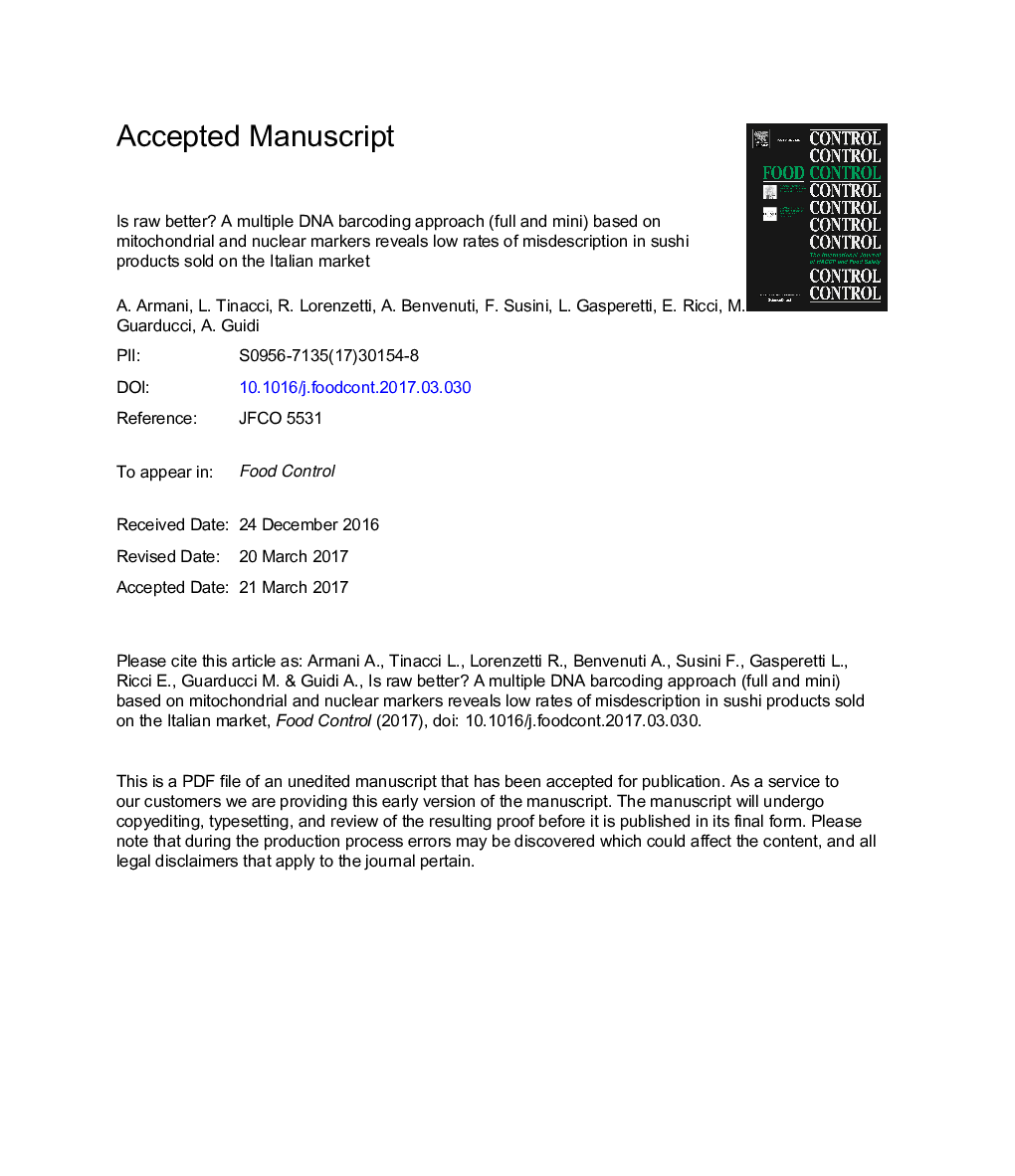| Article ID | Journal | Published Year | Pages | File Type |
|---|---|---|---|---|
| 5767441 | Food Control | 2017 | 33 Pages |
Abstract
New dietary habits have favored an ever growing popularity of Eastern country cooking style and in particular of sushi. Even though the Reg. (EU) 1379/2013 does not apply to restaurants and caterers, the Reg. (EU) 1169/2011 establishes that all the information they provided to the final consumer have to meet the transparency requirements as regards the description of the ingredients used for the preparation of food. The present study aimed at performing a molecular based survey to identify the seafood species used in the sushi preparations at the retail level. A total of 185 samples were collected from sushi venues and supermarkets and DNA barcoding, followed by a pairwise divergence and Neighbor Joining clustering analysis, was applied in order to verify the information declared at purchase. Rather than to a proper training of Food Business Operators working at the catering level, the low mislabeling rate found in this study (3.4%) could be ascribed to the standardization of the products sold in ethnic restaurants. In fact, the common practice of proposing standardized menus always relying on the same species of fish could limit the risk of mislabeling occurrence.
Keywords
Related Topics
Life Sciences
Agricultural and Biological Sciences
Food Science
Authors
A. Armani, L. Tinacci, R. Lorenzetti, A. Benvenuti, F. Susini, L. Gasperetti, E. Ricci, M. Guarducci, A. Guidi,
